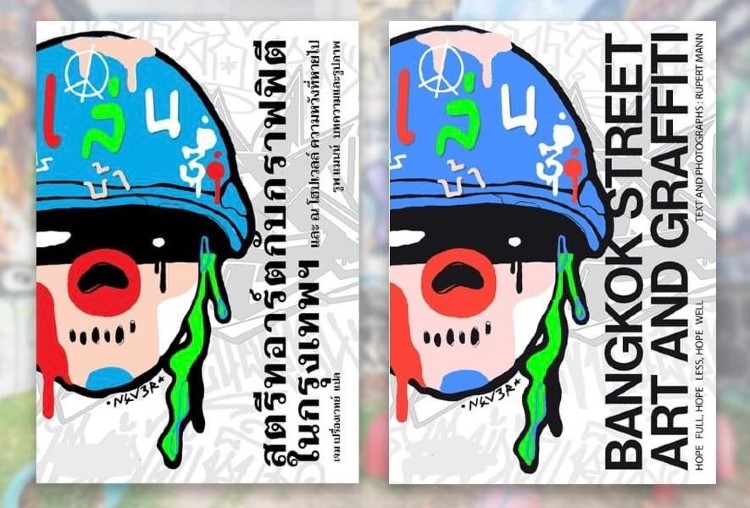
Rupert Mann’s Bangkok Street Art and Graffiti: Hope Full, Hope Less, Hope Well, published last month, is the first comprehensive survey of street art in Bangkok. (Alisa Phommahaxay’s more limited Bangkok Street Art was published in 2019.) The book contrasts the insular graffiti tagging scene of the early 2000s with the emergence of more character-based street art in the early 2010s. Similar divisions persist over the increasing commercialisation of street art, and Mann addresses the nuances of these debates and places them in historical context. It is also available in a Thai edition, titled สตรีทอาร์ตกับกราฟฟิตีในกรุงเทพฯ และ ณ โฮปเวลล์ ความหวังที่หายไป.
The book’s main focus is the artistic takeover of Hopewell, the site of an abandoned elevated road and rail line. (Hopewell’s huge concrete pillars now stand as monuments to overambition, lethargy, and corruption.) The most interesting chapter covers political dissent, led by Headache Stencil’s pieces denouncing Prawit Wongsuwan (the deputy PM with a suspicious penchant for luxury watches) and Premchai Karnasuta (the head of ITD — which secured some of the country’s most lucrative infrastructure contracts — who organised an illegal hunting party), and includes a discussion of censorship and its circumvention.
The book’s main focus is the artistic takeover of Hopewell, the site of an abandoned elevated road and rail line. (Hopewell’s huge concrete pillars now stand as monuments to overambition, lethargy, and corruption.) The most interesting chapter covers political dissent, led by Headache Stencil’s pieces denouncing Prawit Wongsuwan (the deputy PM with a suspicious penchant for luxury watches) and Premchai Karnasuta (the head of ITD — which secured some of the country’s most lucrative infrastructure contracts — who organised an illegal hunting party), and includes a discussion of censorship and its circumvention.


